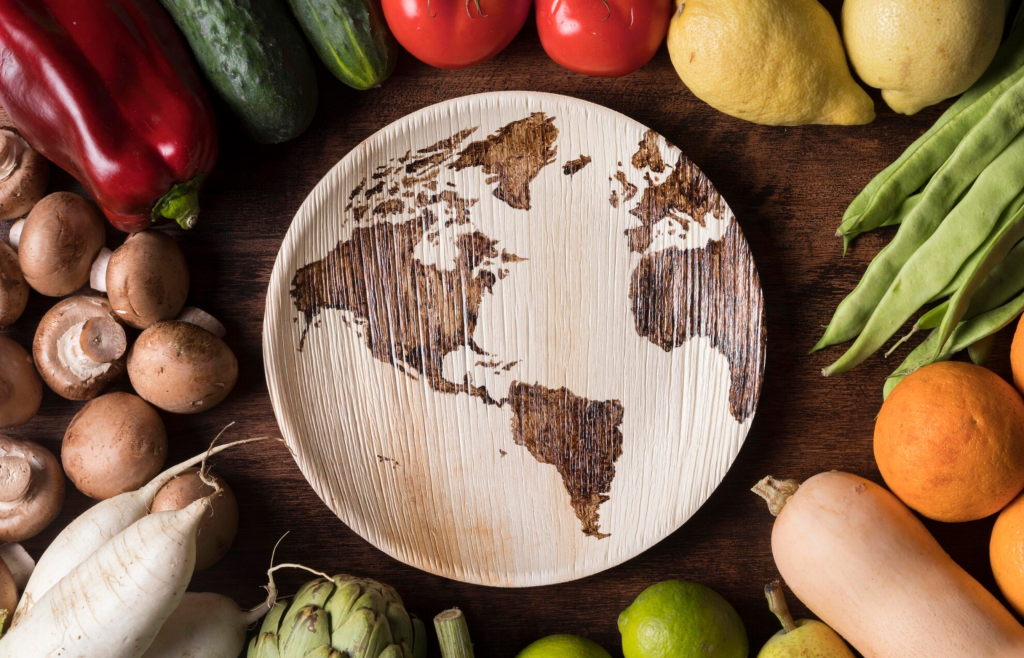Climate change isn’t just a distant threat to polar bears or melting glaciers—it’s already disrupting the systems that feed the world. As global temperatures rise and extreme weather becomes more frequent, our ability to grow, transport, and distribute food is under increasing pressure.
From droughts wiping out crops to floods destroying farmlands, the challenges to food security are becoming more complex and urgent. In this article, we’ll explore how climate change is reshaping food systems across the globe, why it matters to everyone, and what can be done about it.

🌾 What Is Global Food Security?
Before diving into the effects of climate change, it’s important to define food security. According to the Food and Agriculture Organization (FAO), food security exists when all people, at all times, have physical, social, and economic access to sufficient, safe, and nutritious food to meet their dietary needs and food preferences.
Food security relies on four main pillars:
- Availability – enough food being produced
- Access – people being able to afford and reach that food
- Utilization – proper nutrition and food safety
- Stability – consistent access over time
Climate change affects all four pillars—directly and indirectly.
🌍 How Climate Change Disrupts Food Systems
Climate change doesn’t impact food security in just one way. Rather, it acts like a domino, setting off a chain of issues across agriculture, transportation, and trade.
1. Crop Yields Are Declining
One of the most visible impacts of climate change is its effect on crop yields. As temperatures rise and precipitation patterns shift, many staple crops—like wheat, rice, and maize—are producing less food per acre.
- A 2021 study published in Nature Food found that global yields of maize decreased by 4.1%, and wheat by 1.8%, from 1981 to 2019 due to climate-related stresses. (Zhao et al., 2021)
Additionally, rising levels of CO₂ can reduce the nutritional quality of crops, lowering protein, zinc, and iron content.
2. Water Scarcity Is Worsening
Climate change is exacerbating water shortages in many parts of the world. As droughts become more frequent and intense, farmers are struggling to irrigate their crops.
In regions like sub-Saharan Africa and South Asia, where rain-fed agriculture dominates, a lack of consistent rainfall has led to repeated crop failures and food shortages.
3. Extreme Weather Events Are More Frequent
Beyond gradual changes in climate, we’re seeing an uptick in extreme weather—like hurricanes, heatwaves, and floods—that can wipe out crops, disrupt transport routes, and destroy food storage facilities.
For example, Pakistan’s 2022 monsoon floods submerged vast swaths of farmland, displacing over 33 million people and severely damaging the country’s food production capacity. (UN OCHA, 2022)
4. Pests and Diseases Are Spreading
As the climate warms, pests like locusts and crop diseases are expanding into new territories. Warmer temperatures create more hospitable environments for pests to thrive and reproduce rapidly.
This creates additional threats for farmers already coping with unpredictable weather, especially in vulnerable regions that lack access to pesticides or early-warning systems.
🍽 Who’s Affected Most?
While climate change impacts everyone to some degree, low-income countries—particularly in the Global South—are the most vulnerable. These regions often depend heavily on agriculture, lack climate-resilient infrastructure, and have limited financial resources to adapt.
However, food insecurity is no longer a distant issue for developed countries either. As global supply chains tighten and prices rise, affordability and access become a concern across the board. For instance, the war in Ukraine showed how quickly disruptions can ripple across the globe, pushing wheat and cooking oil prices to new highs.
💡 What Can Be Done?
Although the challenges are immense, they are not insurmountable. Addressing food security in the era of climate change requires coordinated efforts across technology, policy, and global cooperation.
✅ 1. Invest in Climate-Resilient Crops
Plant breeders and scientists are developing drought-tolerant, heat-resistant, and flood-tolerant crop varieties to adapt to changing climates. For example, drought-resistant maize has already improved food stability in parts of sub-Saharan Africa.
✅ 2. Promote Sustainable Farming Practices
Agroecology, crop rotation, and regenerative agriculture can help maintain soil health, conserve water, and improve long-term yields. These methods reduce the carbon footprint of farming while also boosting resilience.
✅ 3. Support Smallholder Farmers
Small-scale farmers grow about a third of the world’s food, yet they are often the most vulnerable. Ensuring they have access to tools, training, and financial support is essential to global food security.
✅ 4. Improve Food Storage and Distribution
Much food is lost after harvest due to poor storage and transport infrastructure. Investments in cold storage, road networks, and local food markets can dramatically reduce post-harvest loss.
✅ 5. Strengthen Early Warning Systems
Using satellite data and weather forecasting, governments and NGOs can warn communities about upcoming droughts or pest outbreaks, allowing them to prepare in advance.
🌐 Final Thoughts
The connection between climate change and food security is undeniable—and deeply personal. While climate change is a global issue, food is a local one. How, where, and whether food reaches our plates depends on decisions we make today about energy, agriculture, and resilience.
Ultimately, safeguarding global food security in a warming world will require both innovation and compassion. With smarter systems, sustainable practices, and global cooperation, we can ensure that future generations don’t have to choose between climate survival and food on the table.






